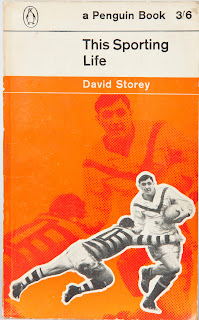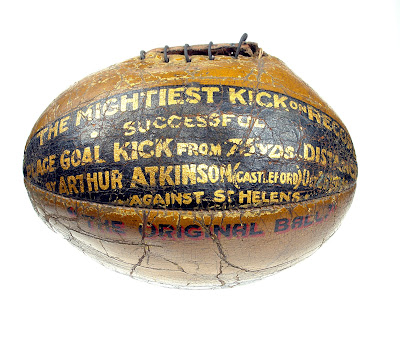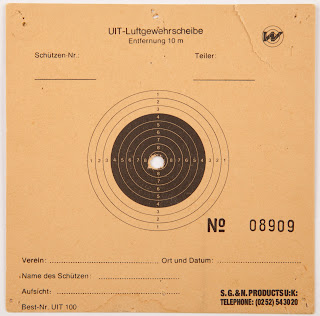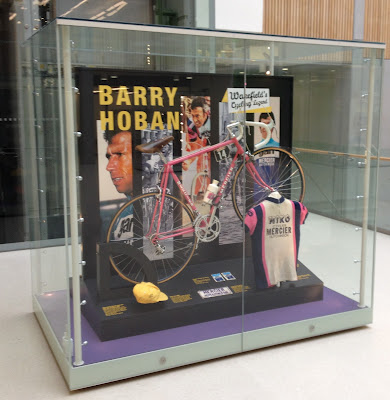When it comes to sporting heritage, Wakefield District has lots to celebrate… even more than you might think!
We've dug out some sporty showpieces from our collection, many of which also feature in our 100 Years of Collecting Online Exhibition.
We are Rugby League
The Wakefield district is often defined by Rugby League. It
both unites and divides our communities.
David Storey encapsulates this in his classic 1960 gritty northern novel, This Sporting Life:
 |
| Our copy of This Sporting Life, on display at Wakefield Museum |
The story follows a Wakefield Trinity player as he navigates his sporting career and his love life. In 1963 a film version starring Richard Harris was released to rave reviews.
Belle Vue stadium features as a key location in the film and many
residents remember being paid to attend as extras in the stands.
Most local people are close followers of one of the big three teams: Wakefield Trinity, Castleford Tigers and Featherstone Rovers.
We have some fantastic objects telling the stories of the clubs, covering their historic victories and record-breaking achievements.
Iconic objects include this thick woollen jersey worn by Wakefield Trinity’s Harper Oliver Hamshaw way back in the 1880s:
 |
| Harper Oliver Hamshaw's rugby jersey |
This was a time when Trinity shaped
the creation of professional rugby league by paying their star player, three-quarter back,
Edward ‘Teddy’ Bartram, a salary of £52. This made him the first professional rugby league player.
Professional sport would be nothing without the supporters!
Telling local fans' stories is just as important as that of the players. This rosette was proudly worn by a Featherstone Rovers supporter when Fev reached the Rugby League Challenge Cup Final in 1974:
 |
| A fan's Featherstone Rovers rosette from the 1974 Rugby League Challenge Cup Final |
Local players didn't only capture hearts and minds - they smashed records.
This rugby ball was used by Arthur ‘Brus’ Atkinson to make a record goal kick of 75 yards in Castleford's victory against St. Helens, on 26 October 1929.
The record still stands 94
years later!
 |
| Arthur Atkinson's record-breaking rugby ball |
But - it's not just rugby league Wakefield makes waves in!
Super Sharp Shooter: Stephanie Park
Stephanie Park nee Hopley (1940-2012) was a nurse and midwife in Wakefield. After losing a leg following an accident, she took up competitive shooting. Stephanie went on to become the World Disabled Champion in target shooting in 1987 and the winner of the Cardiff Open Shoot in 1989. This was the first sports event in which disabled and non-disabled competitors took part equally.
She was also a world champion athlete in field sports and archery.
 |
| Stephanie in action |
She hit all 10 shots through the central ring of this target shot at the 1989 National Small Bore Rifle Association Championship, and rightfully kept it as a souvenir! It features in our 100 Years of Collecting Online Exhibition:
 |
| Stephanie's keepsake target shot from the 1989 National Small Bore Rifle Association Championship |
Stephanie was also a disability rights campaigner and community leader. Her proud son Daniel kindly donated her archive to our collection in 2014.
Click here to read more about Stephanie's incredible life and career.
Tour de Force: Barry Hoban
Barry Hoban is a former professional cyclist from Wakefield who rode during the late 1960s and early 1970s.
He holds the record for the most Tour de Frances completed by a British rider – having finished 11 of the 12 he started between 1965 and 1978.
He was also the first Briton to win two consecutive stages of
the Tour, a feat not matched until 2008!
 |
| A display from 2014 showcasing Barry Hoban, featuring one of his bikes and jerseys |
A Supporting Role: Sykes & Slazenger
In 1870 a saddler’s apprentice from Horbury founded William Sykes Ltd. Soon he was the chairman of a thriving international business. Sykes produced equipment for a huge variety of sports, from billiards to boxing, crown green bowling to croquet.
 |
| A vintage Sykes advert from the 1930s |
Sykes eventually became part of the Dunlop Slazenger empire, pioneering ground breaking new products and technologies. For more than a century, Horbury was a centre of excellence and innovation in sports production, supplying top competitions like the FA Cup and Challenge Cup.



.png)
No comments:
Post a Comment
We would love your comments - though they may take a day or two to appear.